 May 28, 2020 John E. Ross, KD8IDJ, Editor
| ||||||
COVID-19 Impact & News Find the latest news and information on the impact of the coronavirus pandemic to ARRL members and our global amateur radio community. Temporary Rule Waivers Announced for 2020 ARRL Field Day With one month to go before 2020 ARRL Field Day, June 27 - 28, the ARRL Programs and Services Committee (PSC) has adopted two temporary rule waivers for the event: 1) For Field Day 2020 only, Class D stations may work all other Field Day stations, including other Class D stations, for points. Field Day rule 4.6 defines Class D stations as "Home stations," including stations operating from permanent or licensed station locations using commercial power. Class D stations ordinarily may only count contacts made with Class A, B, C, E, and F Field Day stations, but the temporary rule waiver for 2020 allows Class D stations to count contacts with other Class D stations for QSO credit. 2) In addition, for 2020 only, an aggregate club score will be published, which will be the sum of all individual entries indicating a specific club (similar to the aggregate score totals used in ARRL affiliated club competitions).
For example, if Podunk Hollow Radio Club members Becky, W1BXY, and Hiram, W1AW, both participate in 2020 Field Day -- Hiram from his Class D home station, and Becky from her Class C mobile station -- both can include the radio club's name when reporting their individual results. The published results listing will include individual scores for Hiram and Becky, plus a combined score for all entries identified as Podunk Hollow Radio Club. The temporary rule waivers were adopted by the PSC on May 27, 2020. ARRL Field Day is one of the biggest events on the amateur radio calendar, with over 36,000 participants in 2019, including entries from 3,113 radio clubs and emergency operations centers. In most years, Field Day is also the largest annual demonstration of ham radio, because many radio clubs organize their participation in public places such as parks and schools. Due to the COVID-19 pandemic, many radio clubs have made decisions to cancel their group participation in ARRL Field Day this year due to public health recommendations and/or requirements, or to significantly modify their participation for safe social distancing practices. The temporary rule waivers allow greater flexibility in recognizing the value of individual and club participation regardless of entry class. ARRL is contacting logging program developers about the temporary rule waivers so developers can release updated versions of their software prior to Field Day weekend. Participants are reminded that the preferred method of submitting entries after Field Day is via the web applet. The ARRL Field Day rules include instructions for submitting entries after the event. Entries must be submitted or postmarked by Tuesday, July 28, 2020. The ARRL Field Day web page includes a series of articles with ideas and advice for adapting participation this year. Social Distancing Exam Sessions Demonstrate Pent-Up Demand for Testing A recent in-person "social-distancing" amateur radio exam session in Indiana and a "drive-in" session in California are representative of those that are relieving some of the pent-up demand for testing. As the COVID-19 pandemic continues, in-person exam sessions have begun to resume across the US and elsewhere in the world. "With in-person sessions starting up again around the country, we are hearing the same story from volunteer examiner (VE) teams everywhere," said ARRL Volunteer Examiner Coordinator (VEC) Maria Somma, AB1FM. "Large numbers of candidates who have been waiting to test are contacting teams and are thankful for the Anderson (IN) Repeater Club VE Team Liaison Steve Riley, WA9CWE, told ARRL earlier this month that his club has been conducting test sessions every month since 2011, typically serving four or five candidates each session, but the May 19 session attracted 14 individuals. "We were unable to test in April, but were able to get back in for the May session," Riley said. "Several candidates were from Central Indiana, and we had a fellow drive down from Chicago, a couple from the Dayton, Ohio, area, and also from Fort Wayne, Indiana." The team limited participation until it could conduct the trial run. VEs and examinees alike wore face masks, and the test room was configured to accommodate the necessary spacing between individuals. "We questioned everyone entering with the usual health questions," he added. "Our VE paperwork became a serial flow for grading instead of our prior 'huddle' of the three VEs over the answer sheet," Riley recounted. "As a result, things were a bit slower than in the past. The tables, pencils, and pens were disinfected." The result for the session was 11 new radio amateurs and three upgrades. "All went well, although we identified a couple improvements in paperwork flow for next month's test," Riley added. "There is quite a pent-up demand for new amateur licenses and upgrades as a result of the number of test sessions that have been canceled," he continued. "I hope that as sessions resume, they have the success that we had." Riley said he's already been contacted by six people who plan to sit for the exam in June. In California, VE Larry Loomer, KI6LNB, told the ARRL VEC that his team conducted a successful drive-in license testing session on May 16 at the Loomer explained that candidates fill out their paperwork in their cars. "I have circled in pencil all of the boxes on [Form] 605, the answer sheet, and the CSCE (Certificate of Successful Completion of Exam) that the candidates need to fill in, to minimize the face-to-face time." Once paperwork is completed, candidates take a test booklet and answer sheet on a clipboard and sit in a chair in front of their cars, taking the test in front of the VEs. Completed tests go into a box on the VE table, and candidates back their cars into a holding area, to let other cars park by the testing chairs. Once a test is scored and signed, the CSCE goes to the waiting candidate, who may then drive away. "I'm seeing videos of remote test-taking sessions, and they still look labor intensive to me," Loomer said. "We are sticking with the drive-in format for the present time." Somma said, "Our VE teams are doing a great job! I'm impressed with their attention to safety, their professionalism, and their innovative tactics." Global COVID-19 Radio Event Set for June 6 - 7 Stations bearing call signs that promote the "stay-at-home" message and the value of social distancing and isolation have sprung up during the COVID-19 pandemic, with some 150,000 messages of support shared around the world. An on-air gathering over the June 6 - 7 weekend will offer a further opportunity for stay-at-home stations and radio amateurs to share greetings in a contest-like framework, looking toward the day that restrictions will ease, eventually making the "Amateur radio operators across the world are experiencing something we have never seen before, with the current COVID-19 pandemic," Ellam said. "In times like this, on-the-air activities can benefit our communities and ourselves. Events such as this are important to improve operating skills. It is also encouraging us to get on the air and keep active, as well as promoting social distancing." Ellam expressed thanks to the national regulators in more than three dozen countries that made special stay-at-home-suffix call signs available for amateur use. Sponsoring the event and campaign are the Finnish Amateur Radio League (SRAL), in cooperation with Araucaria DX Group (ADXG) of Brazil, and Radio Arcala (OH8X) in Finland. UN Amateur Radio Club President James Sarte, K2QI, has said that 4U1UN will be on the air to support of the global STAY HOME movement, as will sister stations 4U1GSC (operated as 4U9STAYHOME) and 4U1A (operated as 4U2STAYHOME). Special event station W2I/STAYHOME, helmed by Ria Jairam, N2RJ, and Peter Dougherty, W2IRT, will also be on the air, operating CW, SSB, and FT8 simultaneously. (Jairam is ARRL Hudson Division Director.) The STAYHOME event gets under way at 1000 UTC on Saturday, June 6, concluding 24 hours later. Bands will include 80, 40, 20, 15, and 10 meters, with CW, SSB, and digital (FT4/FT8 only). Exchange is a signal report and operator age, except for FT4/FT8 reports. Awards and certificates in the various operating categories will be available. Email for more information. ARRL Podcasts Schedule
The On the Air and Eclectic Tech podcasts are sponsored by Icom. Both podcasts are available on iTunes (iOS) and Stitcher (Android) as well as on Blubrry -- On the Air | Eclectic Tech. Another New Beta Version of WSJT-X is Available A new beta ("release candidate"), WSJT-X version 2.2.0-rc2, is now available for downloading from the WSJT-X website, along with a list of new features. The WSJT-X development team has also published additional FT8 "overflow" frequencies, as the WSJT-X 2.2.0-rc2 Release Notes explain. "Increasing FT8 usage on 40, 30, and 20 meters means that the "These frequencies will appear in your dropdown band-selector list after you go to the 'Settings | Frequencies' tab, right-click on the frequency table, and select 'Reset.' Alternatively, you can add the new FT8 frequencies manually. When the conventional FT8 subband on 6, 20, 30, or 40 meters seems too full, please try moving your dial frequency down 3 kHz! [A]s currently implemented, WSJT-X will set your dial to the lowest frequency for the selected mode and band, when you switch bands." The latest "general availability" (GA) release is WSJT-X 2.1.2. The K7RA Solar Update Tad Cook, K7RA, Seattle, reports: No significant solar activity over the past week, and still no sunspots observed since the end of April. According to Spaceweather.com, the percentage of spotless days in 2020 has inched up to 79%. The percentage of days showing no sunspots for all of 2019 was 77%.
Predicted solar flux for the next 45 days sits at 70, on every day, just as it did in last week's forecast. Predicted planetary A index is 5 on May 28; 8 on May 29 - 31; 5 on June 1 - 14; 8 on June 15 - 16, and 5 on June 17 - July 11. On May 27, Spaceweather.com pointed toward an active region, possibly a sunspot, just over our sun's eastern horizon. You can see it via the STEREO observatory. In solar images, east is toward the left, from Earth's perspective. It is expected to come over the horizon and begin to point toward Earth on May 29. Sunspot numbers for May 21 - 27 were 0, 0, 0, 0, 0, 0, and 0, with a mean of 0. The 10.7-centimeter flux was 70.2, 70.8, 69.1, 68.8, 70.3, 69.7, and 68, with a mean of 69.6. Estimated planetary A indices were 5, 6, 4, 5, 5, 4, and 3, with a mean of 4.6. The middle latitude A index was 8, 7, 4, 5, 7, 3, and 6, with a mean of 5.7. A comprehensive K7RA Solar Update is posted Fridays on the ARRL website. For more information concerning radio propagation, visit the ARRL Technical Information Service, read "What the Numbers Mean...," and check out K9LA's Propagation Page. A propagation bulletin archive is available. Monthly charts offer propagation projections between the US and a dozen DX locations. Share your reports and observations. Just Ahead in Radiosport
See the ARRL Contest Calendar for more information. For in-depth reporting on amateur radio contesting, subscribe to The ARRL Contest Update via your ARRL member profile email preferences. Announcements
Moonbounce Contact via FT8 Could be a First FT8 codeveloper Joe Taylor, K1JT, has reported what is possibly the first FT8 contact via moonbouce (Earth-Moon-Earth or EME) on May 21 between Paul Andrews, W2HRO, in New York, and Peter Gouweleeuw, PA2V, in the Netherlands. The contact was made possible using the currently available beta-release candidate of WSJT-X, version 2.2-rc1. "Why might you want to use FT8 instead of 'Old Reliable JT65' for EME QSOs?" Taylor asked in a subsequent Moon-Net post. "FT8 is The FT8 protocol included in the beta version of WSJT-X has an optional user setting to work around the 2.5-second path delay. "For terrestrial use, the FT8 decoder searches over the range -2.5 to +2.4 seconds for clock offset DT between transmitting and receiving stations," Taylor explained. "DT" represents the difference between the transmission time and actual time. "When 'Decode after EME delay' is checked on the WSJT-X 'Settings' screen, the accessible DT range becomes -0.5 to +4.4 seconds. Just right for EME." As Taylor explained in his post, FT8 uses 8-GFSK modulation with tones separated by 6.25 Hz. At the time of the contact, the expected Doppler spread on the W2HRO - PA2V EME path was 8 Hz, which would cause some additional loss in sensitivity. Despite the path losses, however, copy between W2HRO and PA2V was "solid in both directions," Taylor said. Taylor said that when he was active in EME contests on 144 MHz, he was always frustrated that, even with reasonably strong signals, the maximum JT65 contact rate is about 12 per hour. "With FT8, you can do 40 per hour, as long as workable stations are available," he said. As for using FT8 for EME contacts on 1296 MHz, Taylor said it "might sometimes work, but Doppler spread will probably make standard FT8 a problem." Given sufficient interest, however, he said the WSJT-X development team could design an FT8B or FT8C with wider tone
spacing. He encouraged the use of FT8 for moonbounce on 144, 432, and 1296 MHz and asked users to report their results to the development team. "A 'slow FT8' mode is indeed a sensitivity winner on suitable propagation paths," he said in a later Moon-Net post. "We are busy implementing such a mode, but with particular emphasis on its use on the LF and MF bands." Taylor said FT8 has the operational advantage of putting all users in one (or a few) narrow spectral slices on each band. "So, it's easy to find QSO partners without skeds or chat rooms," he said. "Everything is done over the air, with no 'side channels' needed." Taylor also remarked in response to posts from those who, like him, "love CW." "I agree it's a thrill to hear your own lunar echo, and to make CW EME QSOs," he said. "Sometimes I pine for the bygone world of commercial sailing ships, which happen to be very much a part of my family's history," Taylor concluded. "But I know that technologies evolve, and the world does not stand still." Rocky Mountain Vice Director Resigns to Accept Appointment as Colorado Section Manager ARRL Rocky Mountain Division Vice Director Robert Wareham, N0ESQ, has stepped down from that post to accept appointment as Colorado Section Manager. Wareham would succeed veteran Colorado SM Jack Ciaccia, WM0G, who resigned effective on June 1 after serving since 2011.
"Jack will be moving to the East Coast to be closer to family and I wish him only the best as he transitions to this next phase of his life," ARRL Rocky Mountain Division Director Jeff Ryan, K0RM, said in a message to his Division. "At the same time, I am sorry to lose such an outstanding leader, who has been instrumental in the creation and maintenance of the vibrant amateur radio community that exists across Colorado today. Jack has been a personal friend and advisor to me for many years and I shall miss his thoughtful guidance and his quick humor." Ciaccia, who is relocating to New Hampshire, said his decision was bittersweet. "I am really proud of our accomplishments in the Colorado Section during the past 9 years," he said. "I will miss the hams I have met here in Colorado and their friendship. I am looking forward to now being able to just spend the rest of my days continuing with the satisfaction and enjoyment that ham radio has given me over the past 63 years." Wareham would complete Ciaccia's current term, which runs until September 30, 2021. An ARRL Life Member, Wareham served as Colorado Section Emergency Coordinator since 2011, prior to his appointment as Rocky Mountain Vice Director in 2018. He previously served in the Field Organization as Colorado's State Government Liaison and as Public Information Officer. An attorney, Wareham assisted in drafting the bill that created the Colorado Auxiliary Emergency Communications Unit (AuxComm) in 2016. Ryan said that, while he's sorry to lose Wareham's counsel as Vice Director, "I'm certain he will provide for a virtually seamless transition." A new Rocky Mountain Division Vice Director will be appointed. In Brief...
Upcoming ARRL Section, State, and Division Conventions Note: Many conventions and hamfests have been canceled or postponed due to the coronavirus pandemic. Check the calendar of canceled events on the ARRL website.
Find conventions and hamfests in your area
. .
Subscribe to...
Free of charge to ARRL members...
| ||||||
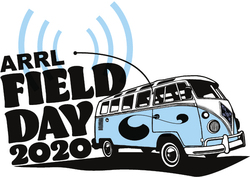 Ordinarily, club names are only published in the results for Class A and Class F entries, but the temporary rule waiver for 2020 allows participants from
Ordinarily, club names are only published in the results for Class A and Class F entries, but the temporary rule waiver for 2020 allows participants from 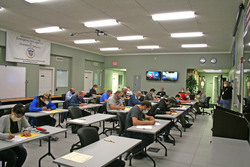 opportunity to sit for an exam. So far, we've heard mostly positive results. Candidates are very prepared, as they've had extra time to study. VE teams and candidates are following CDC and state guidelines for social distancing."
opportunity to sit for an exam. So far, we've heard mostly positive results. Candidates are very prepared, as they've had extra time to study. VE teams and candidates are following CDC and state guidelines for social distancing."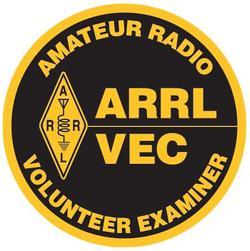 Concord Bay Area Rapid Transit Station.
Concord Bay Area Rapid Transit Station..jpg) stay-at-home injunction obsolete. The patron of the STAYHOME radio
stay-at-home injunction obsolete. The patron of the STAYHOME radio 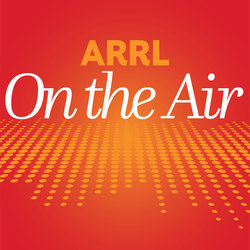 The latest episode of the On the Air podcast (Episode 5) focuses on the various types of modulation and tips on go-kits. The On the Air podcast is a monthly companion to On the Air magazine, ARRL's magazine for beginner-to-intermediate ham radio operators.
The latest episode of the On the Air podcast (Episode 5) focuses on the various types of modulation and tips on go-kits. The On the Air podcast is a monthly companion to On the Air magazine, ARRL's magazine for beginner-to-intermediate ham radio operators.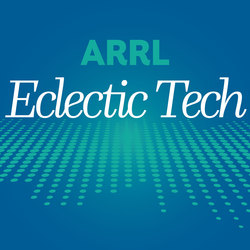 The latest episode of the Eclectic Tech podcast (Episode 8) includes a discussion of 10-meter FM and an interview with Pascal Villeneuve, VA2PV, about "hotspots" for DMR, D-STAR, and Yaesu Fusion.
The latest episode of the Eclectic Tech podcast (Episode 8) includes a discussion of 10-meter FM and an interview with Pascal Villeneuve, VA2PV, about "hotspots" for DMR, D-STAR, and Yaesu Fusion.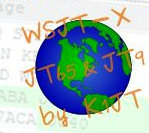 default 3 kHz subbands are often wall-to-wall with signals. Overcrowding encourages some to turn on their amplifiers, which only makes things worse. On a trial basis, and in response to numerous suggestions from around the world, we have added a second set of suggested dial frequencies for FT8 on three HF bands and also on 6 meters...7.071, 10.133, 14.071, and 50.310 MHz.
default 3 kHz subbands are often wall-to-wall with signals. Overcrowding encourages some to turn on their amplifiers, which only makes things worse. On a trial basis, and in response to numerous suggestions from around the world, we have added a second set of suggested dial frequencies for FT8 on three HF bands and also on 6 meters...7.071, 10.133, 14.071, and 50.310 MHz.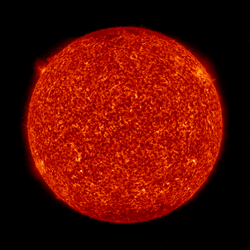 Average daily solar flux for last week was 69.6, up from 69 during the previous week. Average mid-latitude A index was 5.7, it was 4 during the previous week, and average planetary A index was 4.6, up from 3.7 during the previous 7 days.
Average daily solar flux for last week was 69.6, up from 69 during the previous week. Average mid-latitude A index was 5.7, it was 4 during the previous week, and average planetary A index was 4.6, up from 3.7 during the previous 7 days.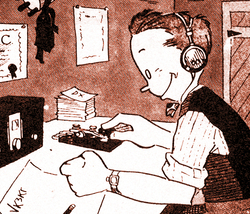 The MicroHAMS Digital Conference (MHDC) was held virtually this year, offering an opportunity to reach out to speakers who might otherwise been unable to attend. Typical attendance at the in-person conference is around 100 people. The virtual event attracted between 300 and 500 viewers actively watching the livestream. The 2,000 unique views during the conference indicated that some only attended a portion of the day or specific sessions. The 13th annual MHDC is
The MicroHAMS Digital Conference (MHDC) was held virtually this year, offering an opportunity to reach out to speakers who might otherwise been unable to attend. Typical attendance at the in-person conference is around 100 people. The virtual event attracted between 300 and 500 viewers actively watching the livestream. The 2,000 unique views during the conference indicated that some only attended a portion of the day or specific sessions. The 13th annual MHDC is 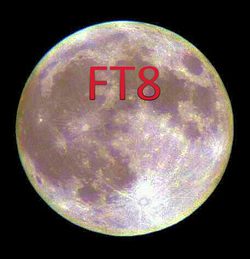 about 4 dB less sensitive than JT65, but with 15-second T/R [transmit/receive] sequences it's four times faster, and it doesn't use Deep Search," he said, answering his own question.
about 4 dB less sensitive than JT65, but with 15-second T/R [transmit/receive] sequences it's four times faster, and it doesn't use Deep Search," he said, answering his own question..jpg)
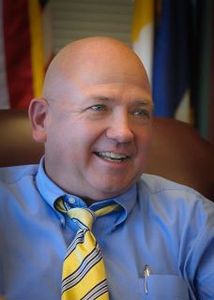
.JPG) Islands On The Air (
Islands On The Air (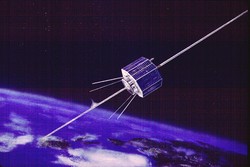 Several satellite operators have reported that the FM repeater on the vintage AO-27 satellite recently has been active for brief intervals. When commanded on by control operators, the transponder is active for about 2 minutes before it reverts to telemetry transmission only. Patrick Stoddard, WD9EWK, points out that AO-27 was never designed to be an FM satellite; it lacks the audio filtering typically used in an FM receiver, since AO-7's uplink receiver was going to be used for data. With the lack of audio filtering on the uplink receiver, AO-27 was used for tests with D-STAR radios. (The Wayback Machine has captures of the former ao27.org website, detailing how those tests were done. Two radios were used for those D-STAR contacts -- one for uplink and the other for downlink.) Many hope that control stations will eventually be able to recover the satellite sufficiently to provide more regular FM operation. In the meantime, if you hear the satellite active, make your contacts quickly! -- Thanks to AMSAT News Service via Patrick Stoddard, WD9EWK
Several satellite operators have reported that the FM repeater on the vintage AO-27 satellite recently has been active for brief intervals. When commanded on by control operators, the transponder is active for about 2 minutes before it reverts to telemetry transmission only. Patrick Stoddard, WD9EWK, points out that AO-27 was never designed to be an FM satellite; it lacks the audio filtering typically used in an FM receiver, since AO-7's uplink receiver was going to be used for data. With the lack of audio filtering on the uplink receiver, AO-27 was used for tests with D-STAR radios. (The Wayback Machine has captures of the former ao27.org website, detailing how those tests were done. Two radios were used for those D-STAR contacts -- one for uplink and the other for downlink.) Many hope that control stations will eventually be able to recover the satellite sufficiently to provide more regular FM operation. In the meantime, if you hear the satellite active, make your contacts quickly! -- Thanks to AMSAT News Service via Patrick Stoddard, WD9EWK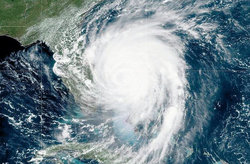 A pre-hurricane season exercise was carried out on May 16 for radio amateurs and the National Weather Service (NWS) in the southeastern US. The scenario was a Category 3 - 4 storm making landfall at Panama City on Florida's panhandle, and moving through Alabama and Georgia. The Tallahassee NWS Office asked amateur radio operators for weather and storm damage reports. Exercise nets opened on HF and on a VHF repeater (HF turned out to be a disappointment), with stations using Winlink for reporting. Stations' weather observations were submitted to the NWS via the nets using the NWSChat utility. The Atlantic Hurricane Season starts on June 1. -- Thanks to The ARRL ARES E-Letter
A pre-hurricane season exercise was carried out on May 16 for radio amateurs and the National Weather Service (NWS) in the southeastern US. The scenario was a Category 3 - 4 storm making landfall at Panama City on Florida's panhandle, and moving through Alabama and Georgia. The Tallahassee NWS Office asked amateur radio operators for weather and storm damage reports. Exercise nets opened on HF and on a VHF repeater (HF turned out to be a disappointment), with stations using Winlink for reporting. Stations' weather observations were submitted to the NWS via the nets using the NWSChat utility. The Atlantic Hurricane Season starts on June 1. -- Thanks to The ARRL ARES E-Letter.png) AMSAT has spelled out its GOLF program objectives. AMSAT says the aim of its developing "Greater Orbit, Larger Footprint" (
AMSAT has spelled out its GOLF program objectives. AMSAT says the aim of its developing "Greater Orbit, Larger Footprint" (







